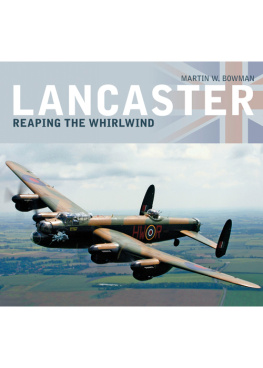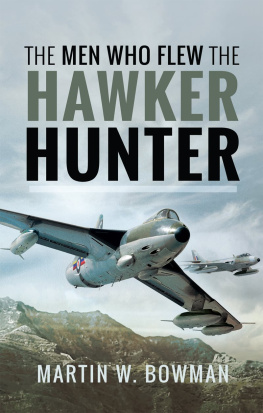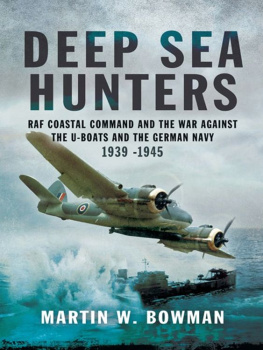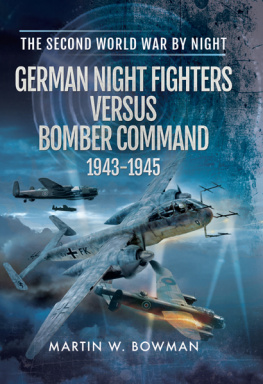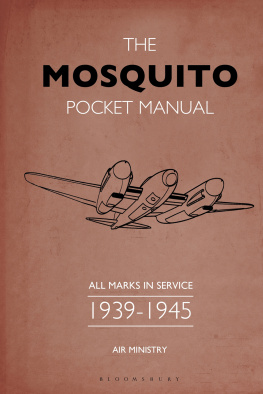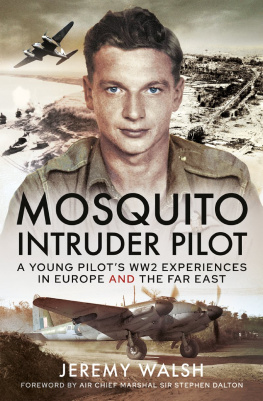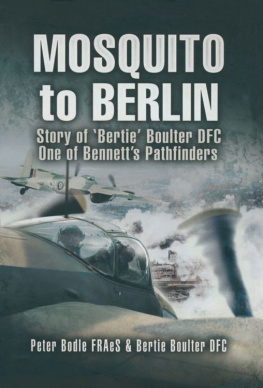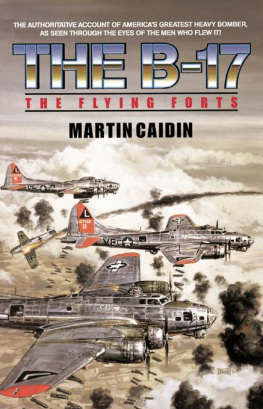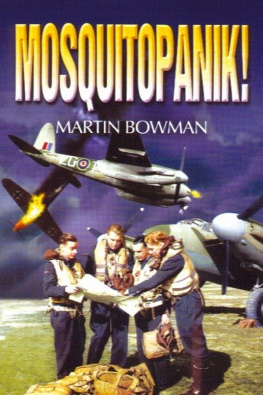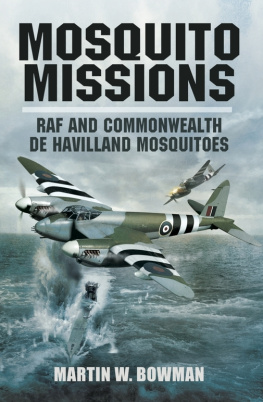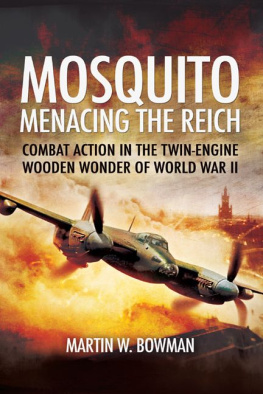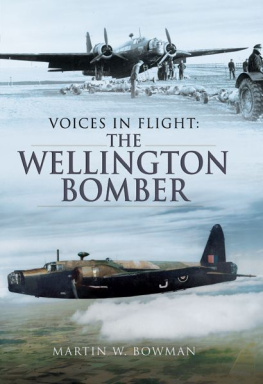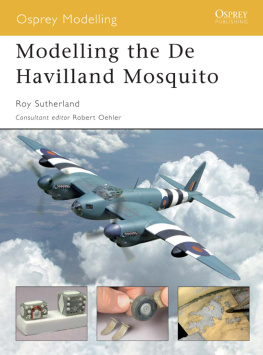Acknowledgements
I am most grateful to the following people for making it possible to include so much diverse information and anecdotes on Mosquito operations: Sidney Allinson; Philip Back DFC; Norman Bacon; H. Barker; Len Bartram; Tim Bates; Derek Taffy Bellis DFC*; Air Vice-Marshal H. Bird-Wilson CBE DSO AFC; Philip J. Birtles; Barry Blunt BA (Hons); Dr Theo Boiten; Ed Boulter DFC; Tommy Broom DFC**; Jeff Carless; John Carnegie; Mike Carreck DFC; George Cash; Peter Celis; Mrs S.A. Chadderton; Dorothy Chaloner; Bob Collis; Hank Cooper DSO DFC; Patrick Corness; Luc Cox; Hans-Peter Dabrowski; Squadron Leader Mike Daniels; Eastern Daily Press ; Eastern Evening News ; Grenville Eaton; Leslie Fletcher; Mrs P. Jane Fox, Legion Magazine; J.D.S. Garratt DFC*; Rev. Nigel Gilson; Air Vice-Marshal Bill Gill DSO; Val Grimble; Ken Godfrey; Peter B. Gunn, author of RAF Great Massingham ; Alan Hague; Leo Hall; G. Horsfield; Richard Howard; Squadron Leader Stephen J. Howard; M. Howland; Harry Jeffries; Bernard M. Job; Legion Magazine; Lancashire Evening News ; E.W. Lawson; Wing Commander R.W. Leggett; Frank Leyland, Andrew Long; Squadron Leader George Lord; Sister Laurence May; G.F. Mahony; Captain Bill McCash AFM; Noelle Meredith, PRM, Royal Aeronautical Society; Denis Moore; Eric Mombeek; Wing Commander A.P. Morgan; F.G. Morris; Mosquito Aircrew Association; Wing Commander George Newby; J.A. Padilla; Wing Commander George Parry DSO DFC; Simon Parry, Air Research Publications; Squadron Leader Charles Patterson DSO DFC; Allan Pudsey; Ralph Ramm; John Rayner, G.Av.A; W.F. Rhodes; the late Peter Richard; Squadron Leader E.J. Saunderson; James F. Bill Setchell Jr; Wing Commander Joe Singleton; Jerry Scutts; Group Captain E.M. Smith DFC* DFM; Colonel R. Smith; Derek Smith DFC*; Mrs Ann Solberg Clark; Martin Staunton; Dr Robin Steel; C. Tarkowski; Geoff Thomas; Henk Van Baaren; John Vasco; Paddy Walker; Colin Ginger Walsh; Peter Waxham; Alan B. Webb; Brian Williams; Phyllis and the late J. Ralph Wood; Squadron Leader R.G. Tim Woodman DSO DFC; W.C. Woodruff CBE FRAeS; Worcester Evening News .
C H A P T E R 1
The New Wooden Walls
Bruce Sanders
In July 1942 one of those unpredictable emergencies arose which even the widest and most comprehensive planning cannot insure against happening. It became a matter of great and vital urgency that certain papers should be flown to Russia and a reply received within the space of twenty-four hours. Search was made for a suitable plane and a highly trained and experienced crew to fly it. The crew selected was a pilot and observer of Coastal Command, who had flown on many trips across the northern waters and knew the convoy routes. The plane they were given was one of the secret Mosquitoes, the all-wooden wonder being turned out by the de Havilland company and supplied to Bomber Command without any publicity in the home Press. The Mosquito was something the RAF was still keeping up its bright blue sleeve. It was a secret the enemys Air Intelligence would have given a great deal to know about, a secret that was to cause him much operational grief before, more than four months later, the first story of the existence of the Mosquitoes was to be released after the sensational and dramatic attack by these aircraft on the Gestapo Headquarters in Oslo in the broad light of day.
But in July, to the ordinary man and woman in the street, the mosquito was still a summer pest with a horrid appetite for sensitive skins, one of those lowly and thoroughly noisome creatures an incomprehensible Providence had allowed to multiply alarmingly in an already overcrowded world. Certainly never to be accorded the dignity of a capital M! However, as two Coastal Command men sat over their breakfast at six oclock one bright July morning, a twin-engined plane, clean-cut in line, sprouting cannon, two excited and very proud men the only mosquito in the world was the one on the runway whose engines purred with the rhythm of power. They did not dally over the meal.
The sun was beginning to find its real lustre when they climbed into the aircraft, settled themselves in their cockpits, quickly checked the instruments and radio and gave the ground staff the OK sign. The chocks were pulled away, the sleek length of the wooden frame shuddered slightly and the Mosquito moved forward. It rose off the airfield, circled once and then headed east. The highly confidential and urgent flight to an aerodrome in the north of Russia had begun.
The pilot knew his stuff. He headed straight out across the North Sea, making for the Norwegian coast. He kept high and thrilled at the effortless ease with which his Rolls-Royce Merlins pulled the aircraft through the air. He kept glancing at the speed gauge, fascinated by what it revealed.
Making the Norwegian coast, he turned up it and headed due north, still keeping very high. Suddenly the oxygen supply failed. The observer placed his finger over a hole that had appeared in the oxygen tube, and the pilot put the planes nose down into a sharp dive.
On that dive the needle of the speed gauge flickered on the 450 mark.
He pulled out of the dive suddenly and sent the Mosquito screaming away to the north-east. A glance below had revealed, spread over the surface of the sea, a fleet of German warships. He had been diving out of the clouds straight at them!
The Mosquito flattened out, twisted and zoomed. The flying skill of the pilot and the brilliant manoeuvrability of the aircraft warded off certain disaster.
We had passed over them, the pilot reported later, referring to the German warships, and into cloud in a matter of seconds before they could open fire.
The remainder of the flight to the aerodrome marked on the pilots chart was made without incident. Landfall was made, and shortly before noon the British plane landed.
The two Coastal Command men received a hearty welcome from the Russian airmen, who eyed the aircraft that had made the flight with keen, appreciative eyes. The British flyers were taken into the Russian mess for lunch and a rare lunch it proved for men who had been on rations.
There were mounds of pt de foie gras, bottles of vodka, borsch, mountainous steaks of venison, piles of bright creamy butter, and the samovars worked overtime producing cup after cup of what the pilot described as the most perfect tea I have ever drunk.
Lunch over, and smoking cigarettes, the Coastal Command men were shown over the aerodrome and generally entertained by their hosts. At three oclock they were back at the Mosquito in flying-kit, ready to take off.
Seven and a half hours later, with daylight still in the English sky, they dropped down over their own landing-field, having made an uneventful flight.
We then had a late dinner, the pilot recounted later. Altogether we had been in the air eleven hours and fifty minutes. I was a bit cramped, since I couldnt leave my seat and had to wriggle my body to avoid stiffness.
But the trip had been made. The papers were exchanged. The Mosquito had fully justified the faith placed in its design and production and it was ready for more urgent work.
The urgent work was waiting. Work like the truly remarkable flight to Malta by way of France and Italy made by another Coastal Command crew flying a Mosquito. Here are the navigators own words, describing the journey:
We took off from England in fog and set course directly for Venice, climbing to 24,000 ft. The Alps were a breathtaking sight and visibility was now good. At 11.45 hours we sighted Venice, and after reconnoitring the city, harbour and aerodrome and clearly seeing a large battleship and a many-sided passenger liner, we flew over the shipbuilding yards at Monfalcone and then headed for Trieste. There were a number of naval vessels in the harbour. We noted these, set course for Fiume and flew over the small port of Pola on the southern tip of the Istrian peninsula.


